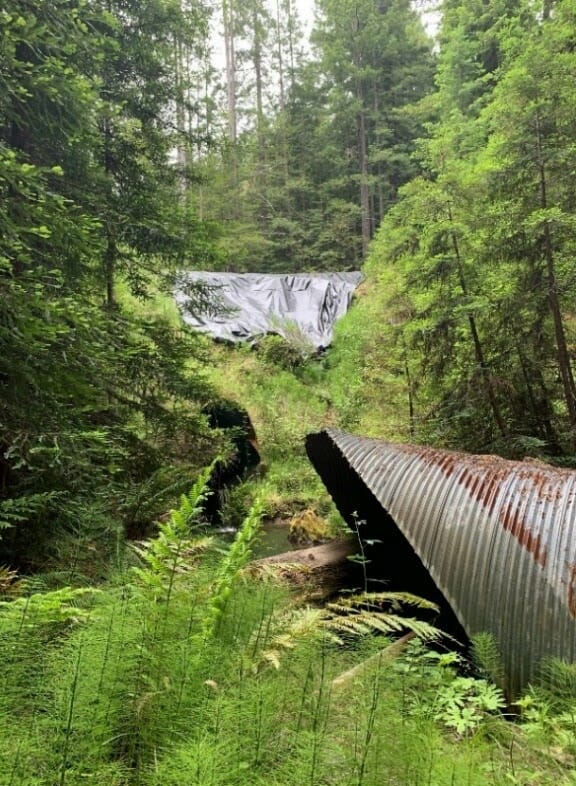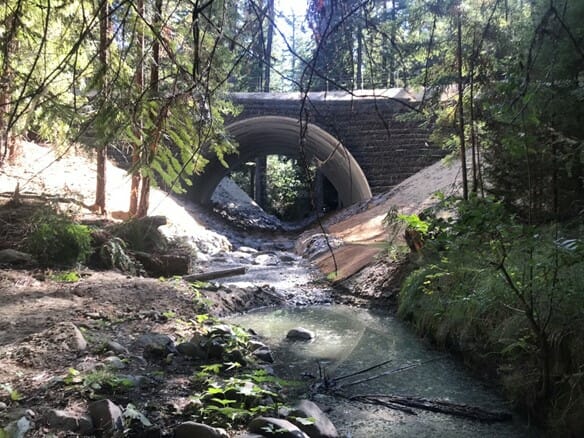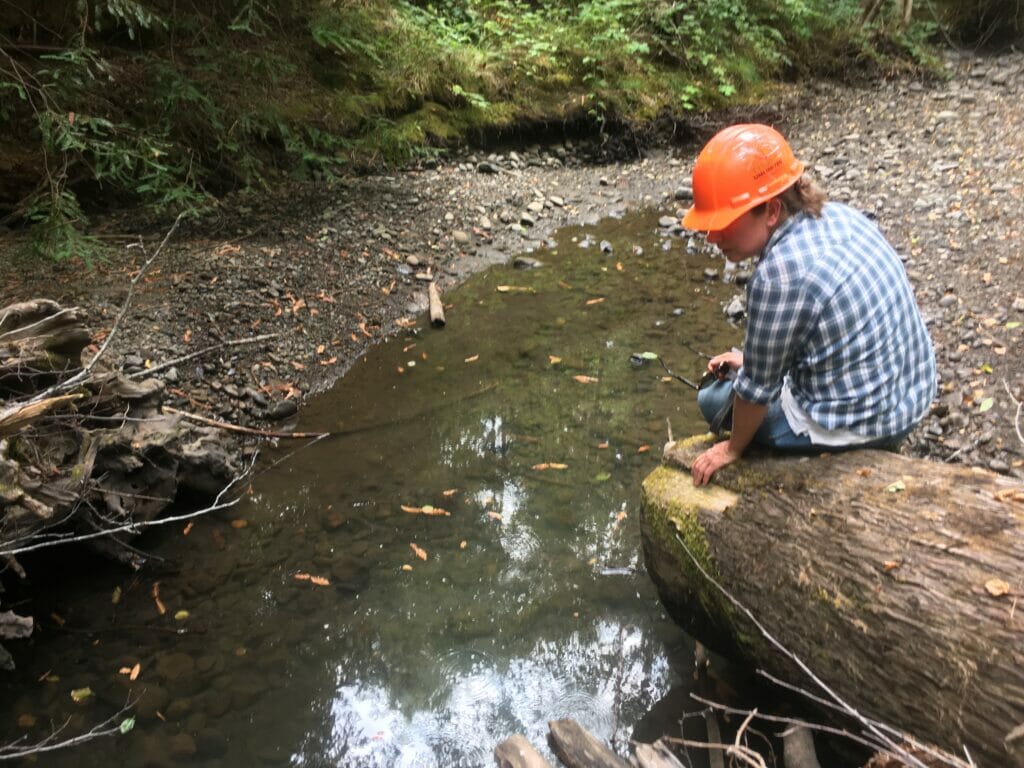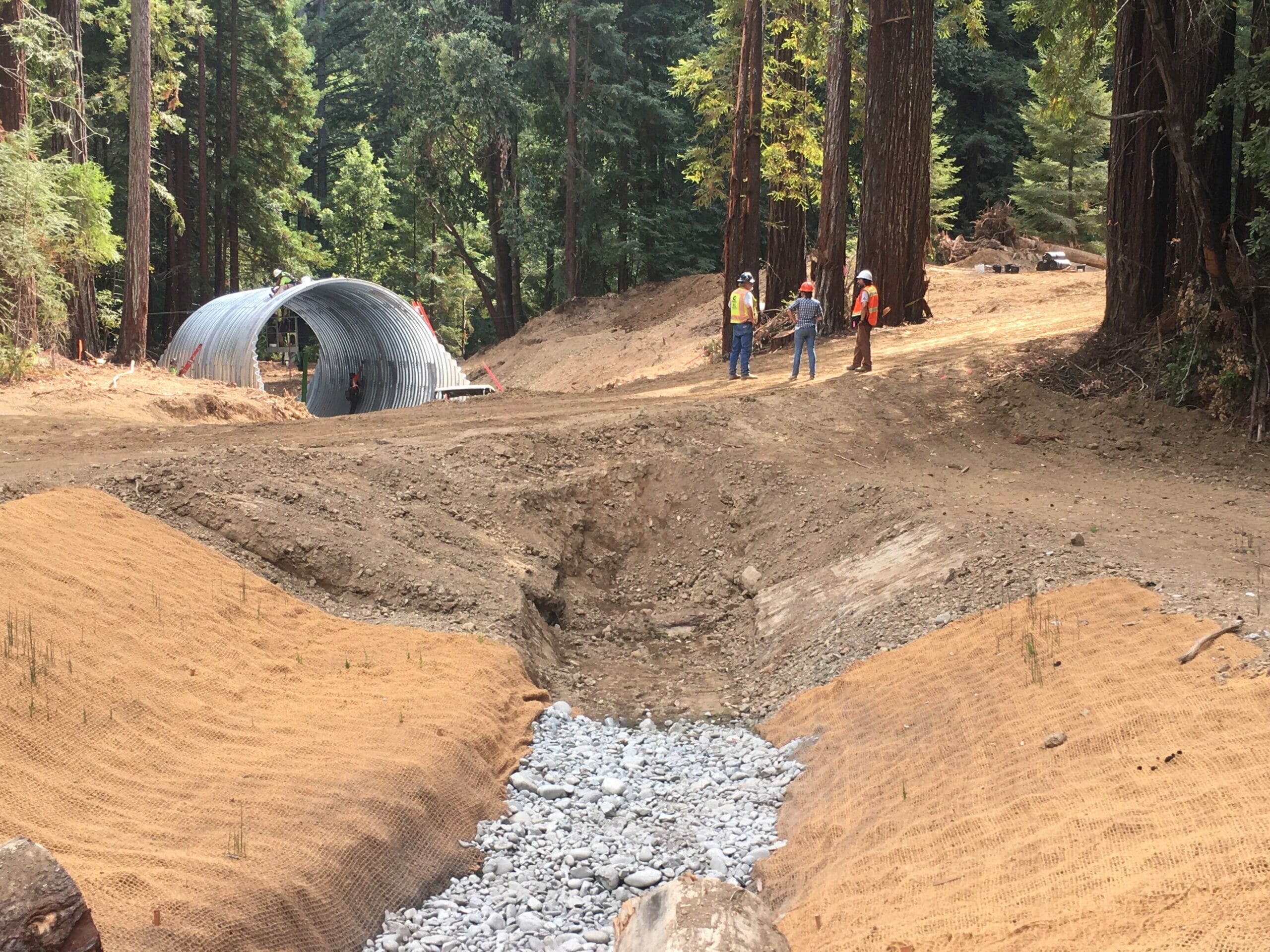TU-led partnership with historic railroad restores key salmon habitat on California’s north coast
Trout Unlimited works with many different types of partners in developing and completing stream restoration projects. Mining and timber companies, ranchers and wine grape growers, private landowners and water suppliers are among the diverse entities that make possible TU’s efforts to enhance dry season flows, habitat productivity, and fish passage in key salmon and trout streams across the country.
You can add railroads to that list. On the Mendocino Coast in California, an old, historic railway line is at the heart of a suite of restoration projects completed this year that will help imperiled fish species in one of the most important river systems on California’s North Coast for coho salmon and steelhead.
These projects, on the Noyo River in Mendocino County, will restore access for endangered coho and threatened steelhead to nearly two miles of key spawning and rearing habitat in the upper watershed. The projects replaced two culverts blocking fish passage along the Skunk Train railway and a third culvert on an adjacent timber road that prevented fish from utilizing valuable habitat.

Once abundant in coastal streams north of Santa Cruz, coho salmon have been in precipitous decline for the past half-century and are now one of the rarest native fishes in California. Federal and state recovery plans for coho rank improvement of fish passage in the upper Noyo has one of the highest priority actions for improving prospects for this species on the Mendocino Coast.
TU led these projects with support from many partners, including the Mendocino Railway (affectionately known as the Skunk Train), the Soper-Wheeler Company, the Mendocino Land Trust, the California Department of Fish and Wildlife, NOAA Fisheries, the National Fish and Wildlife Foundation, Michael Love and Associates, AECOM, Granite Construction, the California Fish Passage Forum, The Nature Conservancy and the Salmonid Restoration Foundation.

Although the Noyo River is home to one of the most stable populations of California coho, the federal recovery plan rates this population at moderate to high risk of extinction. From 2013 to 2018, the 5-year average for returning adult coho was 2,755 (the recovery target for the Noyo is 4,000).
Both state and federal recovery plans for coho salmon in this region also identify reducing sediment deposition sources as an important action step for species recovery. Decrepit culverts are especially problematic, as they can cause erosion into streams—sometimes delivering such large amounts of sediment the impact on fish is catastrophic—and prevent fish from moving throughout the river system.
Anna Halligan, TU’s North Coast Coho Project director, said that one of the culverts under the Skunk Train was in such poor condition that the hillslope around it had begun to erode and was delivering fine sediment into the Upper Noyo River. A large storm event could have saturated the soils and caused slope failure, potentially burying about three miles of the river under one foot of fine sediment — roughly equal to 840 full dump trucks.

This suite of projects has been in the works since 2010, when Trout Unlimited commissioned a detailed assessment of sediment sources and fish passage barriers along the railway. The construction phase of these projects began in June of this year and was completed in October. The two railway culverts were replaced with large structural steel arches. A third culvert on a private timber road directly upstream from one of the rail culverts was replaced with a bridge.
The stream channels were also restored during construction, ensuring fish and other aquatic organisms will be able to migrate successfully.
“Projects like these can take a long time to get off the ground and require a lot of support from public and private entities, but their benefits are immediate and long-lasting,” said Halligan. “Clean water, healthy fisheries, and a robust local economy are good for everyone.”
Such projects also benefit local communities by employing local contractors, helping to sustain existing fisheries, and supporting a mainstay of the Fort Bragg and Willits tourism economy, Halligan noted.
Funding for these projects was provided by the California Department of Fish and Wildlife’s Fisheries Restoration Grant Program, the California Wildlife Conservation Board, the National Oceanic and Atmospheric Administration Community-based Restoration Program, the National Fish and Wildlife Foundation, the California Department of Fish and Wildlife Office of Spill Prevention and Response, the California Fish Passage Forum, The Nature Conservancy, and the Salmon Restoration Association (with funding raised from their annual World’s Largest Salmon BBQ event).



